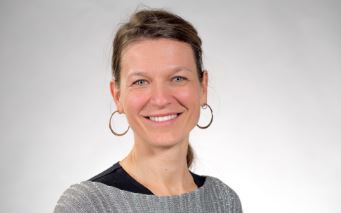
EKA auditioorium A101
Start Date:
28.11.2018
Start Time:
18:00
End Date:
28.11.2018
Dr Helena Gabrijelčič Tomc (University of Ljubljana, Faculty of Natural Sciences and Engineering, Department of Textiles, Graphic Arts and Design) open lecture “3D Technologies and Cultural Heritage” on Wednesday, November 28 at 6PM at the EKA auditiorium A101.
The presentations and interpretations of cultural heritage pose many challenges to researchers, as they need to be not only accurate in terms of documenting the facts about the object of interest but also attractive, interactive and engaging regarding the user experience. Implementation of 3D technologies in documentation, preservation and presentation of cultural heritage is a multi-layered process. After the acquisition of the target data, the processes of data storage, archiving and managing are interlaced with the aim of keeping the data accuracy and adding them values with the processing and analysis. In the steps that follow, i.e. presentation, interpretation and reproduction, 3D technologies (3D scanning, 3D printing, 3D computer aided modelling and design) are widely used and applicable due to their accuracy, repeatability and mostly non-invasive nature. The implementation of these technologies in the framework, however, should not overlooked especially to the more subtle aspects of the cultural object(s) included in the study, i.e. preserving the details of the objects and author’s style.
In the lecture the use of 3D technologies and 3D computer aided-design in cultural heritage are presented closely on the results of four project works, including:
1. the use of 3D visualisation in textile cultural heritage;
2. 3D technologies as an interpretative tool to introduce accessibility for the users;
3. 3D technologies as an interpretative realisation and reconstruction of cultural monument, when the documents of the object are inconsistent and poorly preserved and
4. 3D computer-aided visualisation as a facilitation for the preservation process of the object of contemporary design.
In the first part, the review of the use of 3D technologies in textile cultural heritage is presented and 3D-modelling process and visualisation of a woman’s folk costume from the Gorenjska region (Slovenia) is shown. In order to create a realistic 3D visualisation of the clothing, a real dress was modelled and a thorough examination of all the patterns in the costume was conducted. To create a realistic 3D visualisation of the parts of the cloth with visible porosity, the image data from these parts were processed, analysed and reinterpreted in the visualisation. The workflow for visualisation of textile porous structures was determined.
In the second part of the lecture, 3D modelling and 3D printing are presented in the process of 3D interpretation of Snežnik castle, located in the southwest part of the Lož Valle in the municipality of Loška Dolina (Slovenia) and for 3D interpretation of a non-realised sacred monument that was planned by a known Slovenian architect Jože Plečnik.
In the last part of the lecture 3D reconstruction methodologies, i.e. 3D scanning, photogrammetry and 3D computer graphic are introduced in the preservation of lounger Gondola, a product of Oskar Kogoj, a Slovenian contemporary designer. In the workflow, the computer-aided reproduction is presented together conservation-restoration work and the analytical approach that enabled the observations and the determination of the circumstances in which the lounger suffered severe damage of an irreversible nature during the use.
Associate professor Gabrijelčič Tomc is a lecturer and researcher at University of Ljubljana (Slovenia), Faculty of Natural Sciences and Engineering, Department of Textiles, Graphic Arts and Design. Her research work involves a development of constructional and color-mixing models based on physical products and computer-generated simulations; generating, processing and reproduction of data in media and 3D technologies. With her colleagues she is establishing more noticeable role of the use of 3D technologies and 3D computer graphic in Slovenian cultural and natural heritage. In collaboration with the students, she is researching also the novelties in learning approaches and development, testing and implementation of 2D and 3D computer graphic in creative processes of studying. Besides, she is collaborating with Slovenian studios, companies and researching institutions in the projects involving multimedia production, interaction design and graphic visualisations.
More info:
Maris Veeremäe
maris.veeremae@artun.ee
